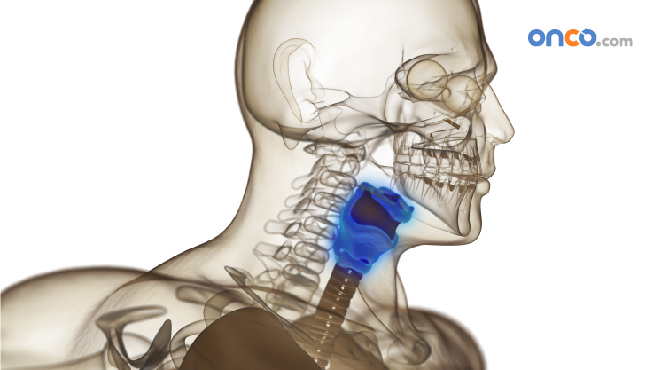What is Stage 3 throat cancer?
Stage 3 throat cancer can be used to refer to either stage 3 hypopharyngeal or stage 3 oropharyngeal cancer. There are both the scenarios where cancer has either not spread to any lymph nodes, or in some cases, the disease has spread to a single lymph node which is less than 3 cms in size.

In stage 3 throat cancer, the tumor size usually larger than 4 cm. Stage 3 tumors may also invade nearby tissue regions, and constrict the vocal cords, or cause difficulty in swallowing.
At stage 3, cancer has not metastasized to any distant parts of the body.
Stage 3 throat cancer in terms of TNM staging (T3 | N0 | M0) or (T1 to T3 | N1 | M0)
Throat cancer is staged according to the TNM system, developed by the American Joint Committee on Cancer (AJCC). TNM staging principles are based on the following three factors:
- T – This represents the size of the main tumor, and indicates how far the tumor has grown inside the throat and in nearby tissue areas.
- N – This represents cancer’s extent of spread into nearby lymph nodes, and determines the number and size of the affected lymph nodes.
- M – This represents the status of metastasis (spread) to distant organs in the body (commonly: the lungs, liver or bones)
Once the T, N and M aspects of the disease have been established via the right diagnostic systems, the information is consolidated to form a group stage for the grade of hypopharyngeal cancer that a specific patient exhibits. This is called the clinical stage of the disease.
T1 to T3 (Small to mid-sized invasive tumors) explained
In stage 3 throat cancer, the tumors are generally larger than 4 cms in size (except for cases of moderately advanced local disease with partial lymph node involvement, where the tumor is between 2 to 4 cms). Such tumors may have invaded deeper tissue layers, nearby tissue areas, and may affect the movement of the patient’s vocal cords.
N0 + M0 and N1 + M0
In stage 3 throat cancer, there can be solitary lymph node involvement. In such cases (moderately advanced local disease), the affected lymph node is generally single in number, less than or equal to 3 cms in size, and present on the same side of the neck as the original tumor.
There is no sign of regional or distant metastasis in stage 3 throat cancer.
Stage 3 throat cancer is harder to treat, compared to stages 0, 1 and 2. A general treatment plan for stage 3 throat cancer includes combinations of chemotherapy, radiation therapy and surgery (multimodality treatment) to remove the tumors, as well as affected lymph nodes.



